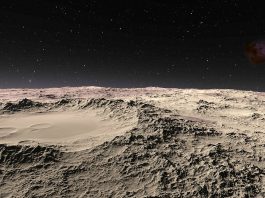Researchers at the University of Leicester have received a sizable grant to investigate some of the Universe’s largest explosions – gamma-ray bursts.
Armed with cutting-edge technology and a grant of £330,689 from the Leverhulme Trust, they are poised to delve into the depths of space to probe the extreme physical forces that give rise to gamma-ray bursts.
Dr Rhaana Starling, the leader of the project from the University’s School of Physics and Astronomy, explained the significance of research: “How such vast amounts of energy are released in such short timescales is one of the big questions we need to probe through gamma-ray bursts.
“We know some of the general picture, but the details of what these jets are made of and how they radiate light, as well as what kind of astrophysical objects can power them all, need investigating.
“I will be able to look at a subset of these in this three-year study that will reap the benefits of new space missions which the University of Leicester has helped to build and upgrades to radio arrays on the ground.”
The phenomenon of gamma-ray bursts
Gamma-ray bursts, among the most extreme cosmic phenomena, serve as cosmic beacons, signalling the demise of massive stars or the collision of neutron stars or black holes.
These bursts of energy, akin to cosmic fireworks, propel vast amounts of energy into space at speeds nearing that of light.
Thanks to their beaming nature, these jets of energy remain visible even across vast cosmic distances, offering a unique opportunity for scientists to study the universe’s most enigmatic events.
What will the study investigate?
At the heart of their investigation lies exploring the physical processes driving gamma-ray bursts.
One compelling theory under scrutiny is the role of magnetic reconnection at shock fronts, a phenomenon witnessed in various cosmic contexts, including our Sun.
Through meticulous observation and analysis, the team aims to ascertain the significance of magnetic fields in shaping the dynamics of gamma-ray burst outflows, shedding light on the composition and energy dynamics of these cosmic jets.
Empowered by a suite of satellite and ground-based telescopes, the team is poised to leverage data from pioneering missions such as SVOM, the Einstein Probe, and NASA’s Swift mission.
Additionally, advancements in radio astronomy, including upgrades to the LOFAR 2.0 array, promise to enhance the team’s observational capabilities, providing unprecedented insights into the elusive nature of gamma-ray bursts.
Dr Starling expressed her gratitude for the Leverhulme Trust Research Project Grant, highlighting the significance of collaborative efforts in driving scientific discovery.
“Gamma-ray bursts are fantastic laboratories in which to probe a whole range of physics from stellar evolution and galaxy evolution, through to particle acceleration and the role of magnetic fields to the formation of the heavy elements and gravitational waves.
“I am delighted to receive a Leverhulme Trust Research Project Grant. The award realises my hopes of tackling questions that are right at the heart of transient science by funding a team to research gamma-ray burst jets in great depth.
“Discoveries are most often made through teamwork – I am really excited to put this team together and start chasing these cosmic explosions,” she concluded.





